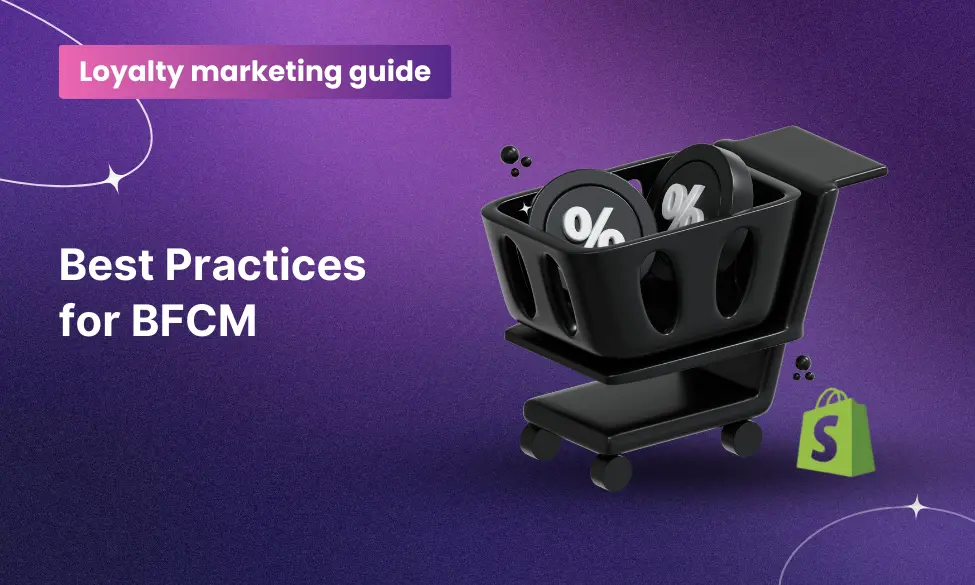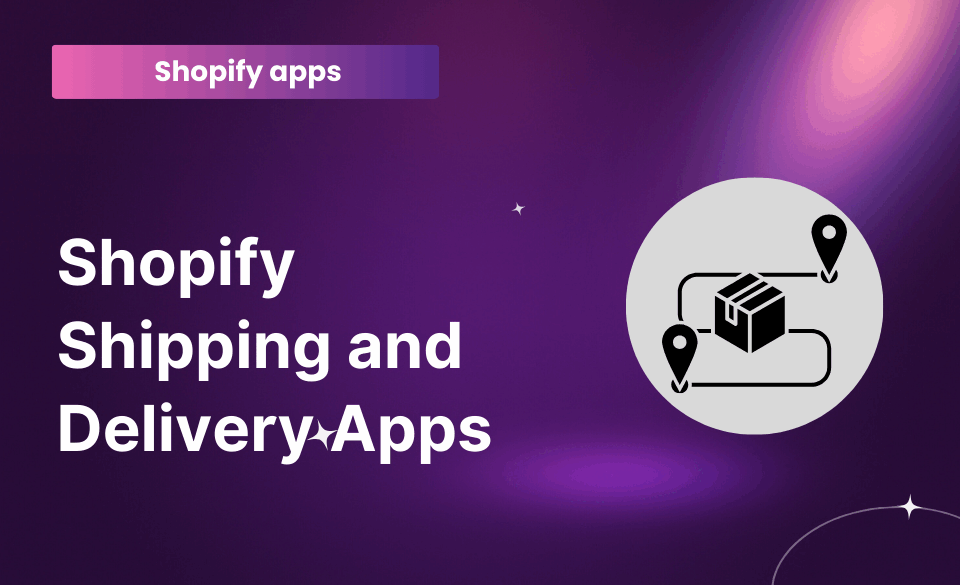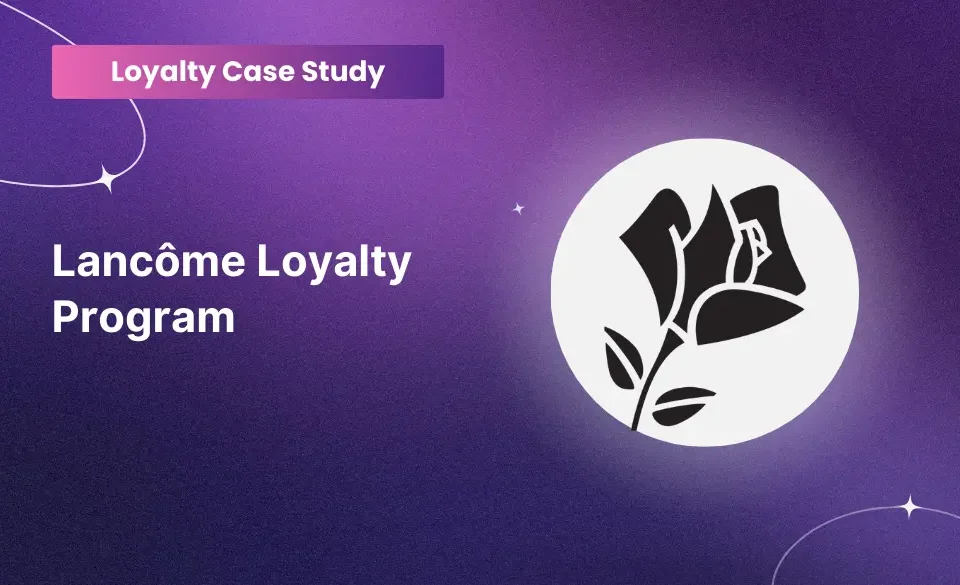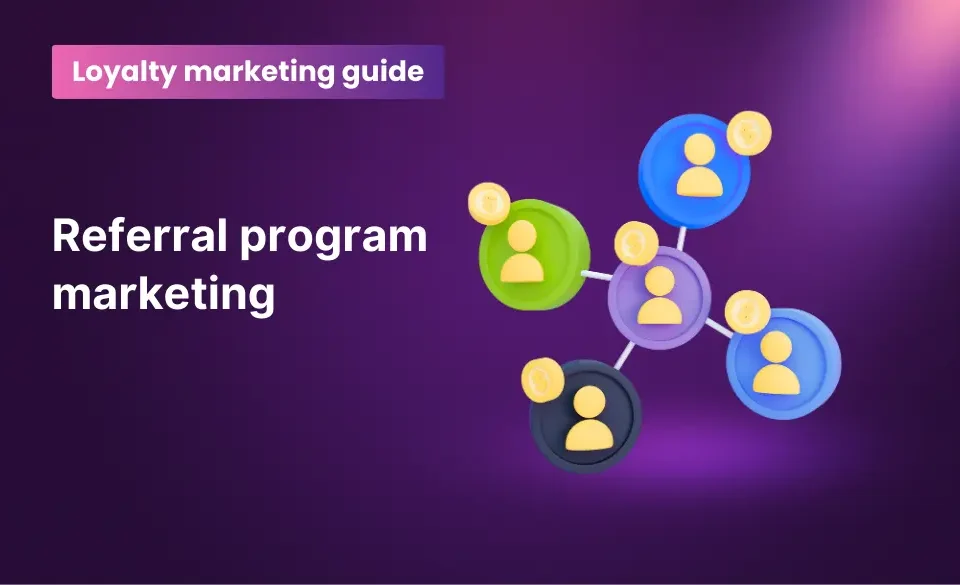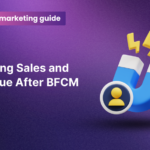
Boosting Sales and Revenue After BFCM: How BON Loyalty Can Help
11 October, 2024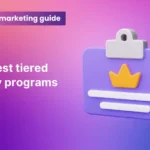
9 Best Tiered Loyalty Programs that Inspire Your Store in 2024
11 October, 2024Running the Shopify BFCM campaign is a huge chance for online stores to attract more customers and raise awareness of their business. As a Shopify seller, you should make sure your store is ready for this busy shopping season.
We’ll look at 32 effective methods to help you make the most of your sales during BFCM 2024 in this complete guide. From optimizing your Shopify store for mobile users to leveraging customer segmentation and creating personalized offers. These tips will give you the tools you need to be successful.
Strategy 1: Optimize Your Shopify Store For Mobile Users
A study by Cloudflare found that 55.3% of Cyber Five events happened on smartphones on Black Friday, making it the busiest day for mobile traffic. That also means if your Shopify store is mobile-friendly, you can increase Black Friday and Cyber Monday sales.
So, make sure your Shopify store has an adaptable design.
Shopify default themes are adaptable and change automatically to fit different screen sizes. However, you may need to change some things so they work better on mobile devices.
If you have web developer knowledge, we recommend you use browser developer tools to simulate different screen sizes and resolutions.
If you don’t have any knowledge of web design, don’t worry; you can use Shopify BFCM landing page design with a drag-and-drop editor. Find suitable apps in article 16+ Shopify page builder apps are free to try.
Strategy 2: Accelerate Page Load Times
According to the PageSpeed Insights blog on the Google Developer website, the best practice right now is to make pages that load in less than a second on any mobile network. This is a big BFCM marketing strategy goal that can be reached if the right steps are taken.
The first is overcoming mobile network latency:
Google’s speed tests show that the DNS check takes about 200ms, setting up the TCP link takes another 200ms, and the HTTP request and answer take another 200ms.
The solution for you is to minify CSS and JavaScript by removing unnecessary characters and whitespace to reduce code size. Also, a content delivery network (CDN) should be used across multiple servers to reduce latency.
The second is optimizing above-the-fold content:
Focusing on providing information above the fold will increase the chances of the page being loaded in less than one second. At the same time, more content that can only be seen by moving down is slowly being loaded in the background.
Luckily, testing how well your website works has never been easier.
The very simple and low-cost Mobilizer service immediately gives you pictures of how it looks on the most famous iPhones, Galaxy phones, and tablets.
Some other websites that can be used to test your internet speed are Google’s PageSpeed Insights, the well-known Website Grader, and GTMetrix.
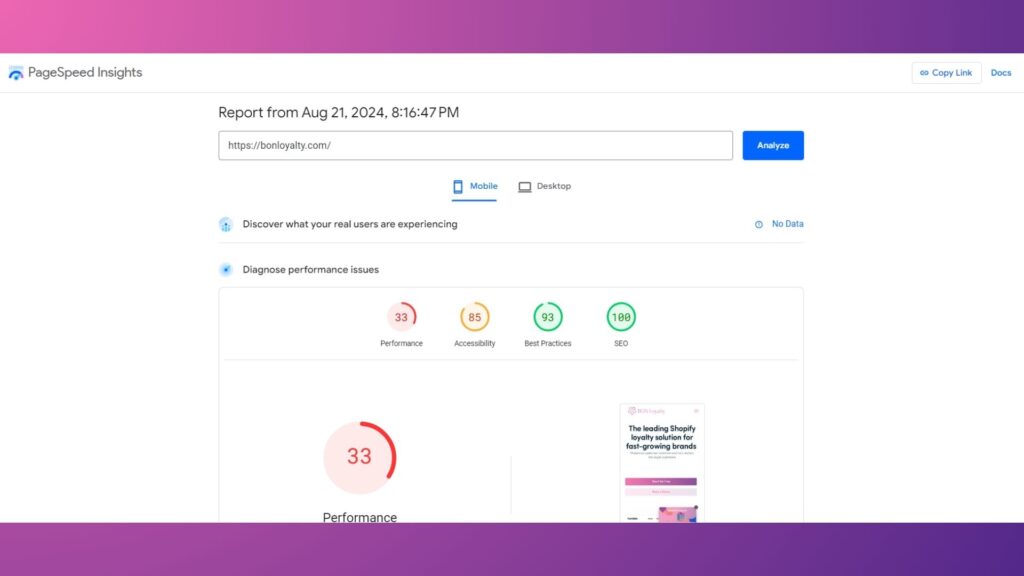
Strategy 3: Simplify Navigation
There are more stores and ways to shop now than ever in e-commerce holiday sales. And their attention spans are getting shorter. That means if you run an online Shopify store and want customers to buy from you, you need BFCM customer journey mapping easier.
- Create a sticky navigation bar to the top button that people can see as they scroll down. You can also add a “back to top” button to let people quickly return to the most important information at the beginning.
- Add a search bar so users can find what they need without scrolling. You should put it at the top of the sidebar or the header. But it needs to work, too, not just be easy to find.
- Improve your menu to help customers find things faster. You can make your product groups stand out, and putting them on your website’s main menu bar is often the best way to get people to start shopping.
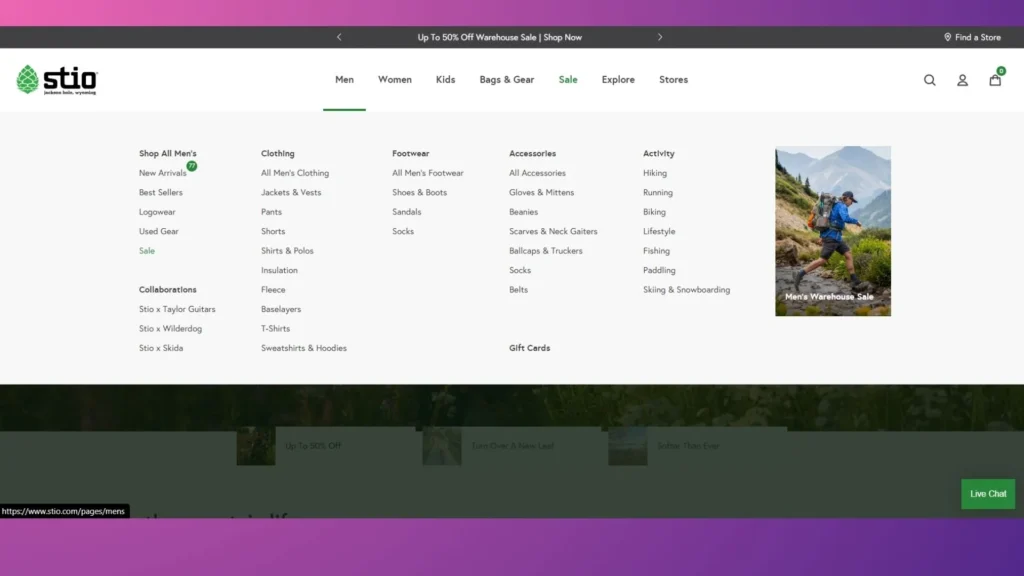
Strategy 4: Improve Checkout Process
Here is the checklist you can follow to make the checkout process better in your Shopify store:
Cut form fields. You need only the forms necessary to finish the sale, such as name, email address, shipping address, and payment information.
Creating a one-page checkout process, like this one from Bellroy. It reduces friction and improves conversion rates.
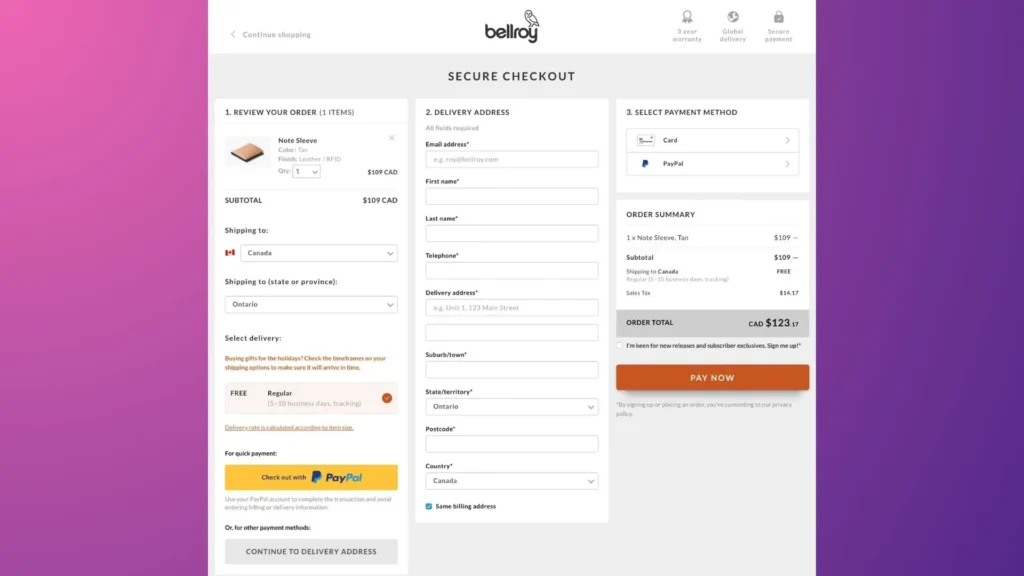
Offers multiple payment options, such as credit cards, PayPal, and Apple Pay. Statista research shows that the European payment market is fragmented and that payment habits vary from country to country. For example, KakaoPay is popular in South Korea. Meanwhile, Sofort Banking is popular in Germany and Austria.
Finally, clear shipping information should be provided by providing shipping estimates. To incentivize purchases, you can offer free shipping for orders above a certain threshold.
Strategy 5: Use Customer Segmentation For Personalized Marketing
We recommend these three main BFCM customer segmentation models for connecting with specific customers.
- Demographic segmentation includes age, race, gender, income, etc. Then, we recommend you use demographics analytics to communicate with different generations. For example, if your target audience is Gen Z (Born 1997-2012), who are highly active on social media platforms. With this insight, you can use targeted social media ads and influencer marketing to reach this demographic.
- Behavioral segmentation is based on customer interaction with your brand. You can split them by how they use your products, buying patterns, and how they shop (in person or online). Additionally, your customer help team can make use of it. Look at how your customers act and see what questions they often ask. Then, give them answers on a frequently asked questions page, a help desk, or through automatic customer service calls.
- Value-based segmentation. Customers can be grouped based on how often they buy, how much they spend, and how many times they buy. This customer segmentation model will help you determine each customer’s return on investment (ROI). That way, you’ll know which customers are the most loyal and less valuable.
To do the methods above, we recommend you leverage Shopify’s built-in analytics or Google Analytics. These tools can help you track customer behavior and segment data based on demographics, interests, and purchase history.
This will help you make more sales, spend your advertising paid more wisely, and provide better customer service.
Strategy 6: Use Customer Segments to Create Personalized Offers
Imagine you’re a passionate animal lover shopping for a new skincare product. Would a huge discount on a non-vegan product excite you? Probably not.
So, as an e-commerce business owner, don’t just throw discounts out there and hope they’ll attract everyone. Instead, use what you know about your customers to create offers that really speak to them. Here are some ideas:
- Tailored discounts that are relevant to each customer’s interests or purchase history.
- Create limited-time offers or exclusive products for specific segments.
- Personalized recommendations that complement their previous purchases or browsing behavior.
- Targeted messaging with each segment’s unique needs and desires.
We can get inspiration from Chanel. During holiday buying, they use customer segments to make personalized deals by suggesting gifts.
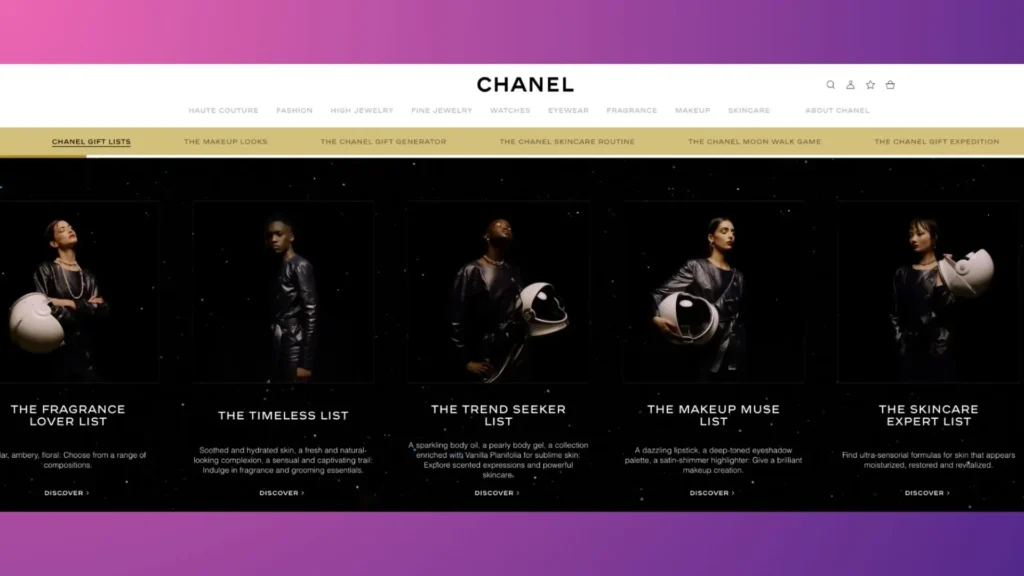
Strategy 7: Build Anticipation With Pre-BFCM Emails
Pre-BFCM emails can create buzz about your upcoming sales and encourage customers to look forward to exclusive offers. They are like inviting your customers to a sneak peek behind the curtain. Then, they will want to see the main event if you follow our tips below:
- Create a sense of urgency by using countdown timers to highlight the time-sensitive nature of your BFCM deals.
- Offer exclusive sneak peeks for your subscribers at upcoming products or collections.
- Use intriguing subject email lines that pique curiosity.
For example, The Couture Club gives the brand’s most loyal customers early access to a BFCM deal. Their email strategy effectively leverages a sense of exclusivity, urgency, and personalization to drive customer engagement and encourage early purchases.
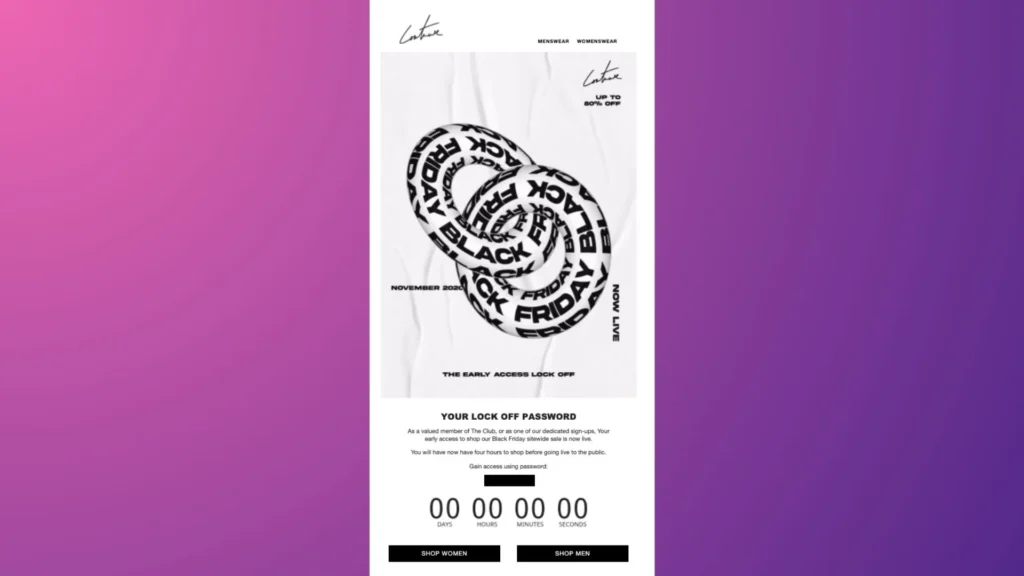
Strategy 8: Segment And Automate Email Campaigns
If you send out a general email that doesn’t consider your audience’s. You might get fewer converts and even end up in the spam box. That’s why you should email segmentation. It means grouping your subscribers into different target audiences according to their demographics, interests, and activity.
We’ve provided three email marketing segments with valuable tips that you can use for your store:
- Segmenting your subscribers based on your signup sources. It let you see which of the signup forms fetches the most subscribers. Also, enables you to personalize offers by providing each form a message or CTA.
- Purchase behavior-specific segmentation. This technique affects consumer brand and product engagement.
- Segmenting your subscribers based on your top order value. They are the absolute best, highest-spending customers you want to keep around.
We recommend you use three popular email marketing platforms:
- HubSpot provides up to 2,000 monthly emails, ten active lists, and reports for free. HubSpot offers CRM, comprehensive marketing automation, customer care, sales, and more for scaling.
- Klaviyo helps companies of all sizes deliver targeted, tailored, and automated emails to consumers.
- Mailchimp is a great place to start if you want to quickly grow your email marketing below messages. The free version includes a landing page builder, customer journey mapping, list segmentation, retargeting advertisements, and A/B testing.
Strategy 9: Optimize SEO, Target High-Intent Keywords For BFCM Traffic
Google’s research found that over half of U.S. shoppers checked product reviews before buying in 2023. They may research and buy things for many months before the holiday sales. That also means that, for a Shopify owner, you should optimize keyword research to find out what keywords BFCM shoppers use. This can help your product get more attention.
It’s not enough for a good product page to just show off your product. Technically, it is also designed for search engine robots, bots that look at the content of your page to see how relevant it is to certain terms. Some of the things you need to do to maintain your Shopify site are not visible to visitors. As an example:
- Keyword optimization is done by carefully researching and selecting keywords your potential customers use to search for products like yours. Next, use keywords in product names, descriptions, and image alt texts. But don’t overuse keywords—the content should read organically to humans.
- Keep URLs simple and include the product name and main keyword. Also, avoid large numbers or characters, which might turn people off and hurt search engines.
- Make your product pages load faster by reducing the size of the pictures, setting up cache, and using Shopify apps less. You can get better rankings, and user experience might result from faster load times.
You can see the image below; we have described more about strategies for product page optimization.
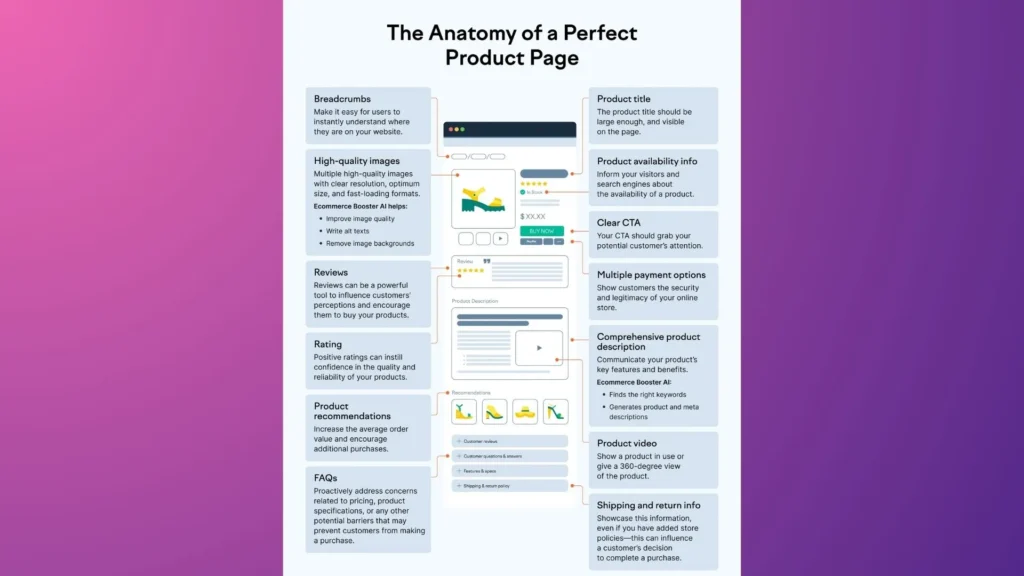
Strategy 10: Update Meta Tags And Descriptions
Google can tell what a web page is about from the title tag and the meta description. These tags won’t appear on your page itself, but users looking for your page will see what’s inside them.
In fact, Google does not consider meta descriptions to be a ranking factor for SEO. However, many people can find your deals easier when you include BFCM offers in meta descriptions. This makes your deals more visible on search engine results pages.
The recommended length for meta tags and descriptions is 160 characters. Google has changed the length of the details in the search results more than once, but every time they’ve made them longer, they’ve taken them back down. Stay within the lower bounds to avoid constant changes.
Strategy 11: Leverage Social Media Marketing And Run Targeted Social Media Ads
Salesforce’s reaseach found that social media brought five times as many visitors to the website during the 2023 holidays. More than emails and online advertisements. As you can see, social media sites are necessary for BFCM season.
For BFCM efforts, knowing how to use the different social media platforms fits with your target audience.
For example, if your target customer is Gen Z, you should focus on platforms like TikTok, Instagram, and Snapchat. This is where Gen Z is highly active. Meanwhile, Gen X tends to consider platforms like Facebook, which is widely used by this generation.
Strategy 12: Utilize Social Proof
Customer reviews are very important for getting potential customers to trust your business. It influences their buying decisions, especially during competitive times like holiday shopping.
As La Croix did, you can connect these social proofs to your Shopify store. This user-generated content, which is brand-specific content, is made by customers for free. This is a social proof source to drive conversions for your Shopify BFCM campaign.
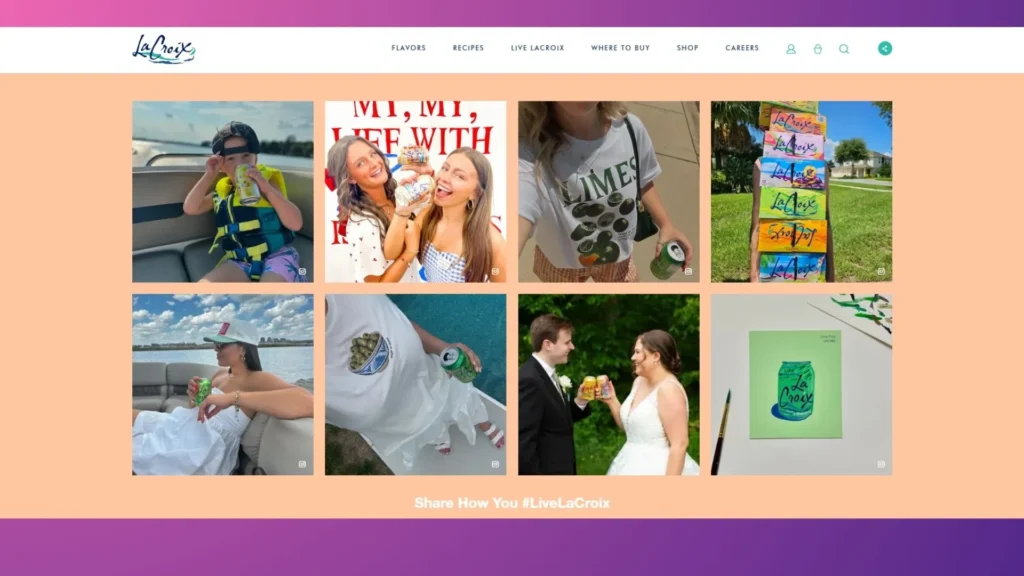
We recommend you read our in-depth guide on 14 ways to get more customer reviews. Customer testimonials can also be easily created using the Shopify builder page’s available templates.
Strategy 13: Use Countdown Timers To Increase Urgency And Scarcity Tactics
Five 2018 tests found that people are more inclined to do unimportant activities with fake urgency (e.g., an illusion of expiry). The “mere urgency effect” describes this psychological basis. Just the sense of pressure can get customers to click the button, enter their card information, and make the buy.
Using this psychology, you can add countdown timers to your landing page and email marketing for your BFCM campaign. Based on our experience, you can consider some apps:
- GemPages offers a drag-and-drop interface for creating custom page layouts, including countdown timers. It integrates seamlessly with other Shopify apps and themes.
- EComposer is a powerful page builder that focuses on mobile optimization and performance. It includes a countdown timer element that can be easily added to pages.
Strategy 14: Showcase Limited Stock Alerts
Like the countdown timer approach discussed above, you can show limited stock notifications during the BFCM season. This not only lets buyers know what products are available but also makes them more loyal to e-commerce companies.
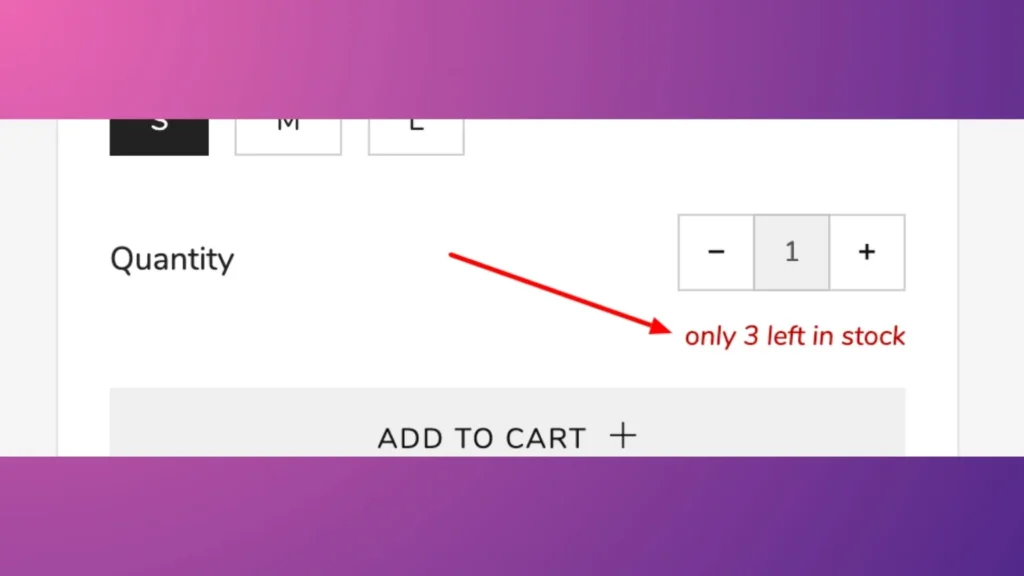
You can set up custom alerts for low stock items with apps like MESA and LSA Low Stock Alert. This way, you’ll never run out of popular things. You can read the guide to add a Shopify low stock alert instantly for more detail.
However, balance scarcity with customer satisfaction by clearly communicating product availability. We recommend that you do not overstate the quantity of a product. For example, under-reporting creates scarcity. Once customers find out the truth, they will be disappointed and never buy from your store again.
Strategy 15: Offer Exclusive BFCM Discounts And Bundles
You can create a sense of urgency during BFCM by offering special deals and discounts. We’ve found that this method works better than countdown clocks and limited stock alerts to get customers to decide quickly to buy. You can also combine three tactics by offering special deals with a countdown time or limited edition products.
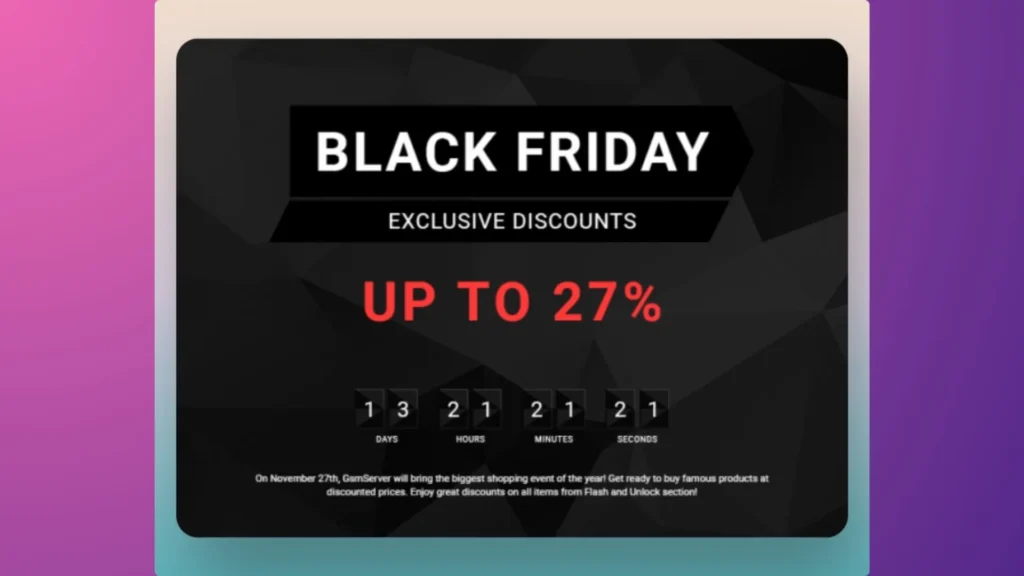
Strategy 16: Create Discount Tiers
As part of your Shopify BFCM campaign, use tiered discounts to get customers to buy more. Take inspiration from Thinx, a period underwear brand that understands customers don’t buy one product at a time. So, they applied a volume discount (tier pricing) strategy for Black Friday sales.
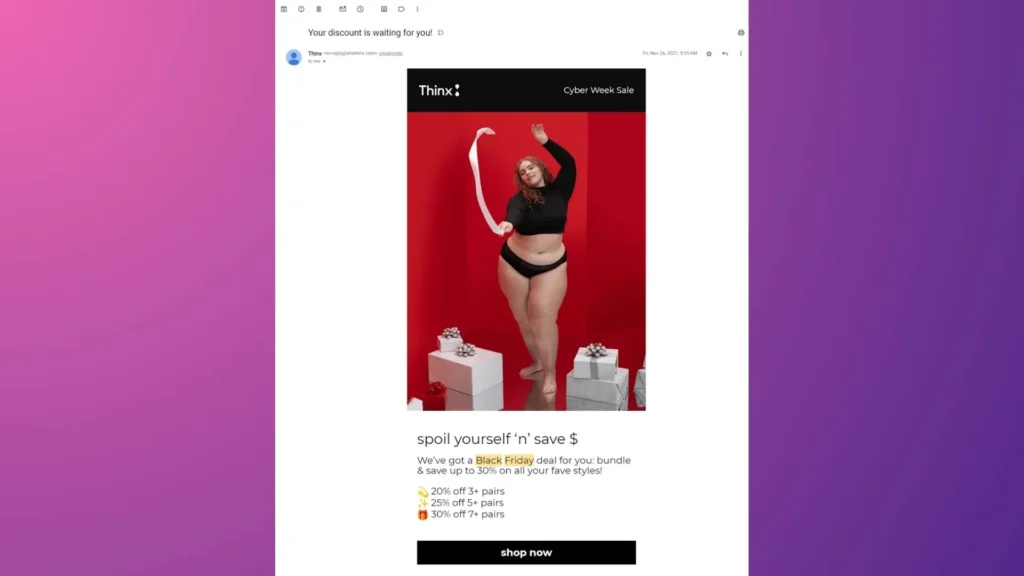
Even if your business model specializes in products that customers can buy in small quantities. You can still use our strategies to offer tiered discounts to boost average order value (AOV):
- An upsell or cross-sell increases the chances that the customer will add more to their order. For example, if you sell shoes, you can recommend that customers buy related products such as socks, insoles, etc., which is a cross-selling strategy. If you offer custom shoes at a higher price than the essential shoes, that is upselling.
- Run Buy One, Get One Free (BOGO) discounts on your cart page, which may boost your AOV.
Don’t forget that your goal is to sell more at a price higher than your AOV. That’s why you should use a price strategy to get a better AOV and LTV and eliminate your stock.
Strategy 17: Bundle Products To Increase Sales
One of the easiest tricks to boost your average order value is product bundling. Customers are shown other goods they might not have thought of before they are bundled. This makes them want to look around your store more.
Customers are shown other goods they might not have thought of before they are bundled. This makes them want to look around your store more. Here are tips on creating irresistible product bundles:
- Pure bundles are combinations of the same product or different products that shoppers can’t buy individually.
- Create a sense of variety through “mix bundles”.
- The bundling of favorite items can help you share your product bundle pricing advantages with your customers.
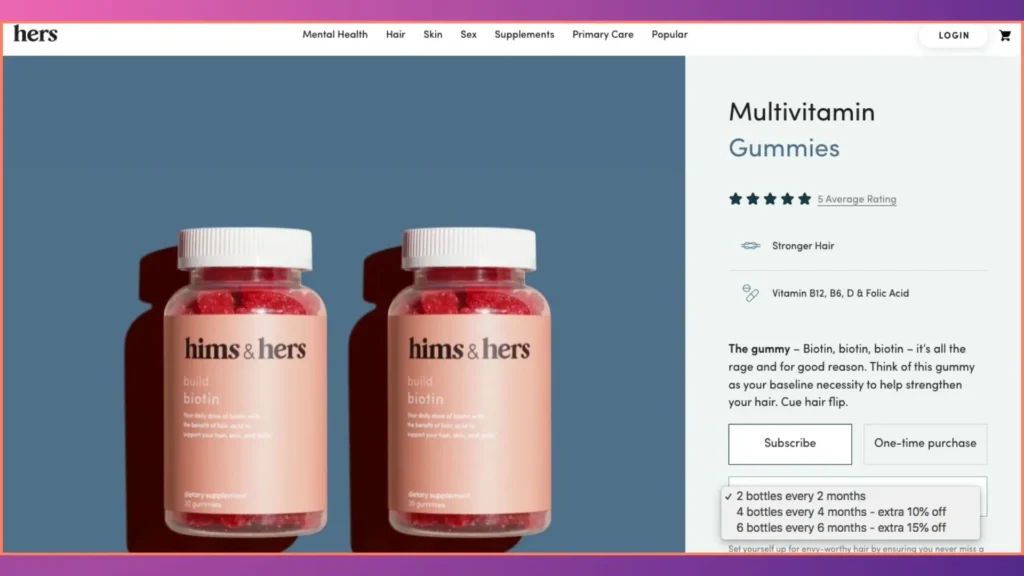
Strategy 18: Optimize Cart Abandonment Strategies
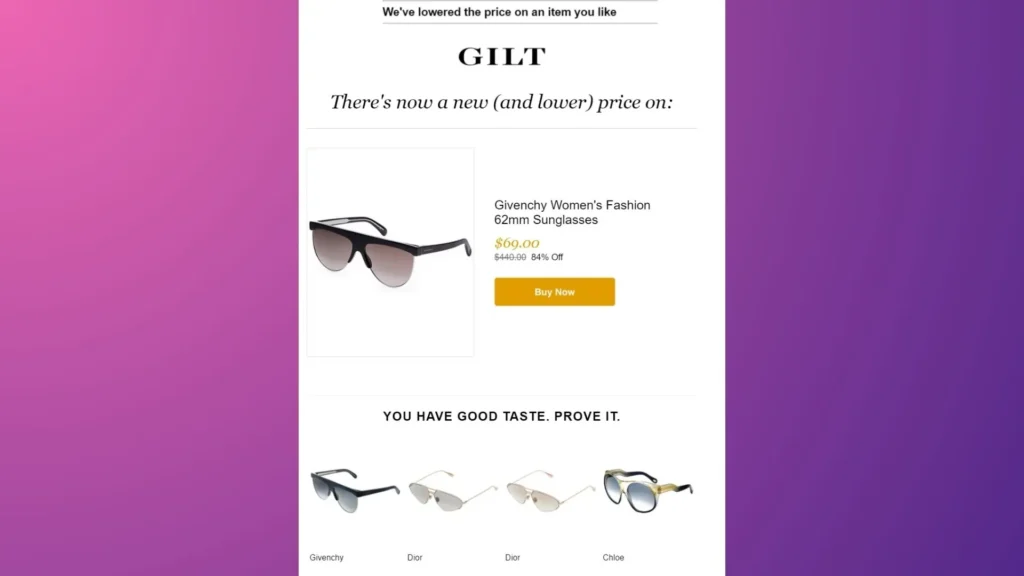
During shopping sales, customers tend to look for the best deals. So, they often add products to their cart and then forget about them. That’s why you should optimize cart abandonment by following our strategies:
- Retargeting cart abandoners. Remarketing relevant adverts to visitors who left your website can help them remember what they added to their cart.
- Send a reminder email to consumers to finish their purchase. This is also a great way to get them to buy by going straight to the cart and giving them a small discount.
The best practice for crafting compelling abandonment emails is ensuring you understand and install trigger and conditional splits. Separate flows enable you to customize abandoned cart email marketing based on event and profile data, such as buy history and product preferences. Just like customer segmentation.
You can refer to how to create an abandoned cart email with Klaviyo.
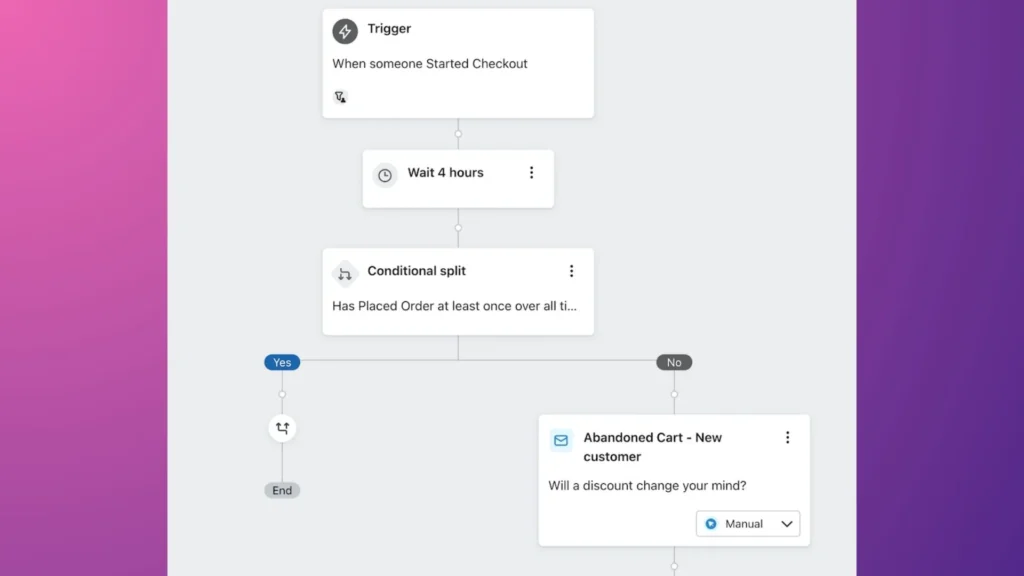
Strategy 19: Offer Limited-Time Discounts For Cart Recovery
Customers often leave their shopping carts empty because they don’t expect to pay extra for taxes, shipping, or other fees. This problem can be solved directly by giving buyers deals. You can incorporate limited-time discounts for cart recovery to drive more conversions.
For example, you can show a countdown timer next to the cart recovery email marketing to encourage people to finish their purchases before the deal ends. Most customers will feel rushed and want to avoid feeling like they’re missing out.
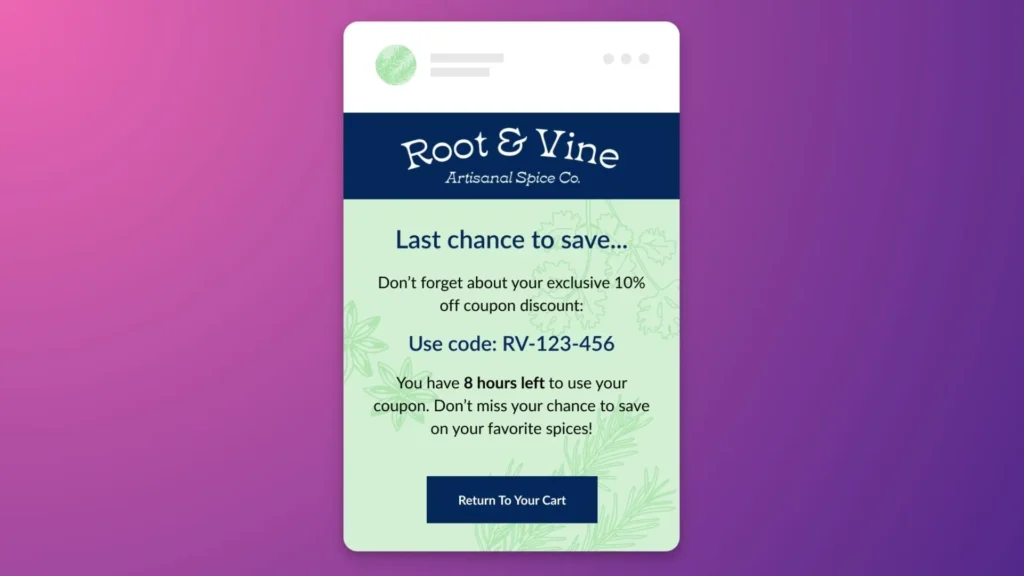
Strategy 20: Prepare Your Inventory And Supply Chain
As we both know, BFCM can be a very busy time for sales. So, we will list steps to ensure you have enough stock for BFCM on your Shopify store:
Step 1: To prepare for the high demand during BFCM, you should conduct an inventory audit. This mean you should review past sales data and stock up on popular items likely to sell quickly.
Step 2: Calculate safety stock to replenish your inventory.
Step 3: Using Shopify’s inventory management tools to track your stock levels in real-time. You can find the suitable app by searching for the keyword ‘inventory’ on the Shopify app store.
Strategy 21: Strengthen Supplier Relationships
You could miss dates and send things late if you lack communication with your provider. But that also means higher shipping costs, gaps, and mad customers. So, one of the best ways to deal with ongoing supply chain gaps is to communicate well with your suppliers.
Our advice on how to get good deals from a seller for BFCM is to be very clear about what you want, like the price and delivery terms, before talking. This will lead the conversation and help things go better.
Strategy 22: Utilize Shopify Apps For Upselling And Cross-Selling
In our strategy 16, which is related to creating discount tiers, we mentioned an upsell or cross-sell strategy. In this part, we suggest some Shopify apps for upselling and cross-selling.
- EcomRise has various tools to assist you in upselling and cross-selling on Shopify. It such as product bundles, volume discounts, and sales notifications.
- ReConvert Post Purchase Upsell can help add one-click upsells, post-purchase offers, and discounted upsells to your checkout.
Strategy 23: Use Apps To Automate Marketing Efforts
Marketing automation tools can make your team more productive by making work more accessible.
Check out Shopify’s app store, which offers a vast selection of high-quality marketing automation tools to streamline your business processes. Whether you’re seeking email marketing, social media automation, or customer segmentation, you’ll find a solution that suits your needs.
These user-friendly apps often require minimal technical expertise, making them accessible to businesses of all sizes.
Strategy 24: Host BFCM-Themed Contests And Giveaways To Engage With Customers
BFCM-themed contests involve organizing contests during BFCM to promote products creatively. These contests can include giveaways, polls, or user-generated content challenges.
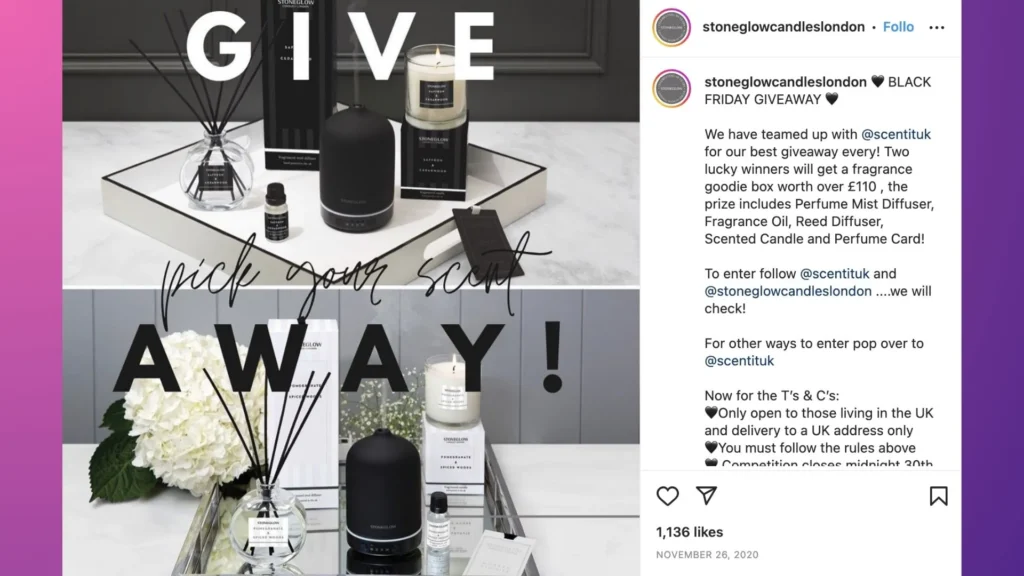
The idea for engaging customers with contests is to collaborate with influencers. HubSpot’s consumer trends study showed that 31% of social media users prefer to learn about new items from their influencers.
Strategy 25: Create Interactive Quizzes And Polls
Social media users are very interested in interactive games and polls, especially during busy shopping times like Black Friday. These quizzes can be used for more than just fun personality tests. They can also get useful information about customers, teach possible buyers, and increase sales.
Our tip is that you can use the poll creation feature on Instagram and Facebook stories to create polls quickly, uniquely, and at the most cost-effective marketing cost.
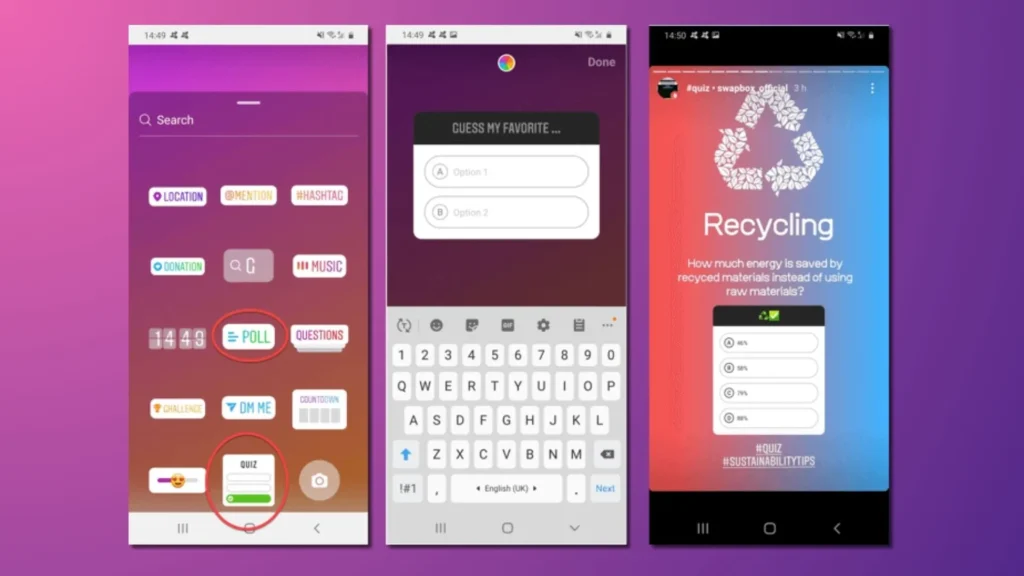
Strategy 26: Plan Post-BFCM Customer Retention Strategies
Big deals on Black Friday and Cyber Monday always attract one-time buyers. Of course, most will be gone as soon as your deals end. Well, only if you have a good plan for keeping them!
If you want to keep Shopify BFCM customers, you need to give them great experiences with your brand. This can be done through a loyalty program, a subscription offer, or great customer service. We will explain more in the next section.
Strategy 27: Implement Loyalty Programs
If customers come to you for the big deals from your Shopify BFCM campaign, they will come back for the same benefits of a loyalty program. We have a detailed guide on how to set up the loyalty program for your ECommerce store.
Özel Beslenm, a Turkish Shopify store that sells health goods, had trouble keeping customers. This is because they had many products and low engagement with the loyalty program. With BON Loyalty for Shopify shop, they were able to start their reward program and solve that problem.
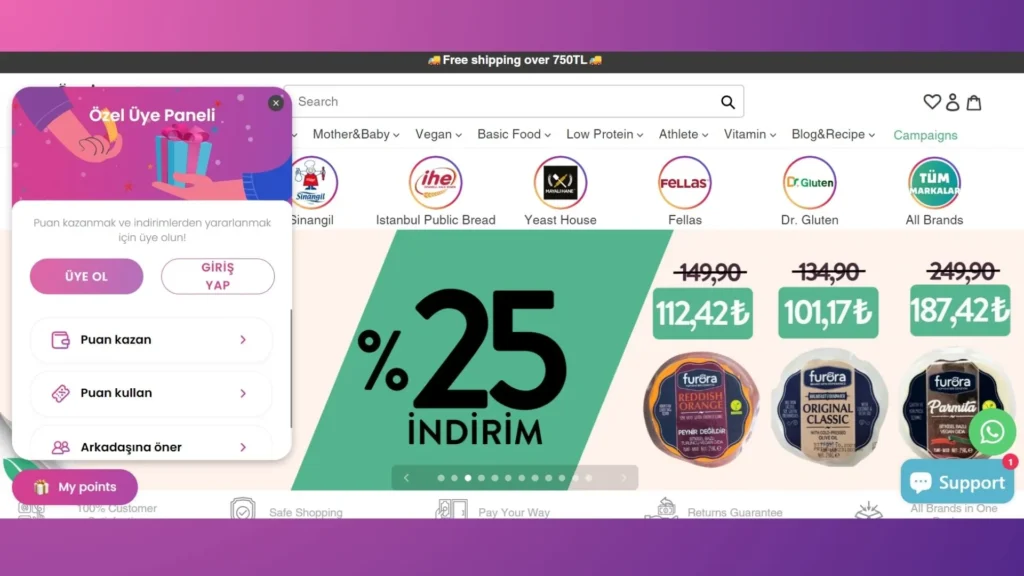
This Shopify loyalty app has many features and affordable pricing. BON app’s coupon feature works exceptionally well at getting customers involved and getting them to buy again.
Strategy 28: Offer Post-Sale Discounts For Future Purchases
Customers probably bought a lot during the sales, so thank them by emailing them a discount. You can do this on social media, email marketing, or even send personalized thank-you cards. Customers will remember your store and buy from you again because of this small but caring act.
Get ideas from Ulta. Their email does a good job of telling customers about the 20% off deal and getting them to act. The style looks good, and the limited-time offer makes you feel you need to act quickly. By talking about the things that could be done better, the email could be even more effective at getting people to buy.
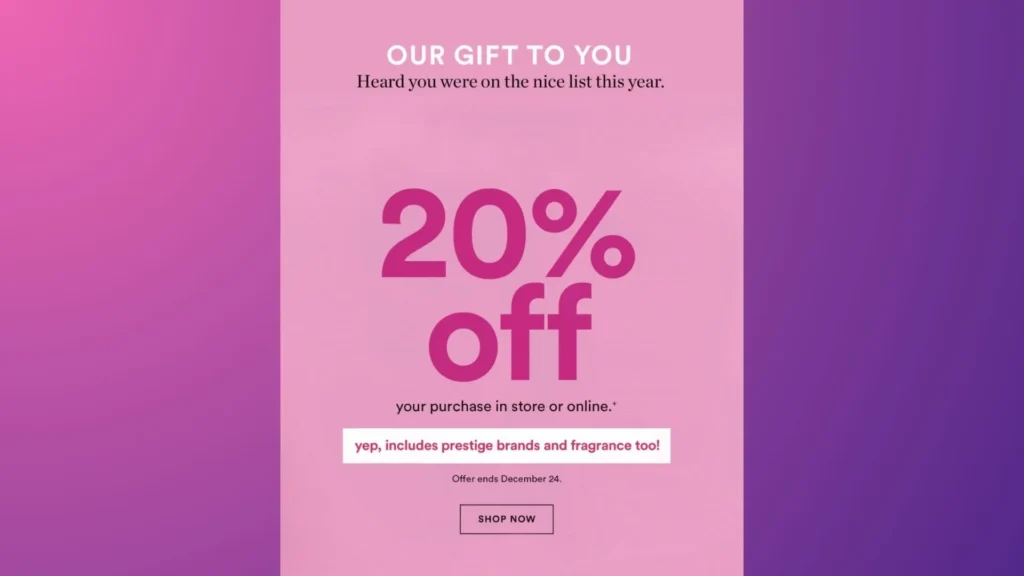
Strategy 29: Prepare Your Support Team For High-Volume
When you run the Shopify BFCM campaign, this is the year’s busiest day. The holidays are coming up quickly. With so many customer questions and help tickets coming in, it’s important to have good customer service plans to keep customers happy and things running smoothly.
During the Shopify BFCM campaign, it can be hard to grow your support team. If you can’t afford to hire and train more employees in-house, you might want to outsource your customer service to a reliable third-party company.
You could also use a customer support tool to manage customer queries and issues efficiently. Our recommendation is MooseDesk.
Strategy 30: Provide 24/7 Support Options
Customers appreciate being able to get help whenever they need it, especially during busy shopping periods. That’s why you need round-the-clock support.
You can use an AI chatbot for 24/7 support and integrate chatbots and other support tools on Shopify. This lets you handle customer questions without constantly watching over them. It makes service even better during busy shopping times.
Strategy 31: Set Up Real-Time Analytics To Monitor And Analyze BFCM Performance
Behavior analytics tools come in various shapes, sizes, and functions. Different tools collect, analyze, and interpret data differently, making some more effective in one aspect than others.
Once you have that data, you can use it to guide your future marketing efforts, such as sending personalized messages and retargeting ads. This will make it easier for you to connect with your followers in the future.
Strategy 32: Conduct A Post-BFCM Analysis
Allow us to imagine that you are reviewing the sales data from your Shopify BFCM campaign. You can’t wait to see how your plans and hard work turn out. But as you dive into the numbers, you start to notice some trends.
You see that your website traffic was high, but your conversion rate wasn’t as good as you hoped. Maybe your customers got stuck on a slow page, or maybe they couldn’t find what they were looking for.
Or perhaps you offered great deals, but your customers weren’t seeing them. Maybe your emails got lost in their inboxes, or your social media posts weren’t reaching the right people.
Here are steps to identify areas of improvement for future sales events:
Step 1: Collect data on your sales, website traffic, customer feedback, and anything else that might give you clues.
Step 2: Analyze your data to find patterns and identify any problems.
Step 3: See how your performance stacks up against industry benchmarks.
Step 4: Talk to your customers and find out what they thought about their shopping experience.
By following the tips in this guide, you can gain valuable insights into your Shopify BFCM performance and identify areas for improvement. Don’t let this opportunity slip away!
Check our blog for more strategies for your Shopify store.
Lindsey Nguyen is a Content Marketing Specialist at BON Loyalty, specializing in digital marketing and eCommerce. At BON Loyalty, she crafts content that empowers Shopify store owners to build and sustain thriving customer relationships through innovative loyalty programs. Her articles, often featured on the BON Loyalty blog, provide valuable strategies and insights that help businesses enhance customer loyalty and increase customer lifetime value.
